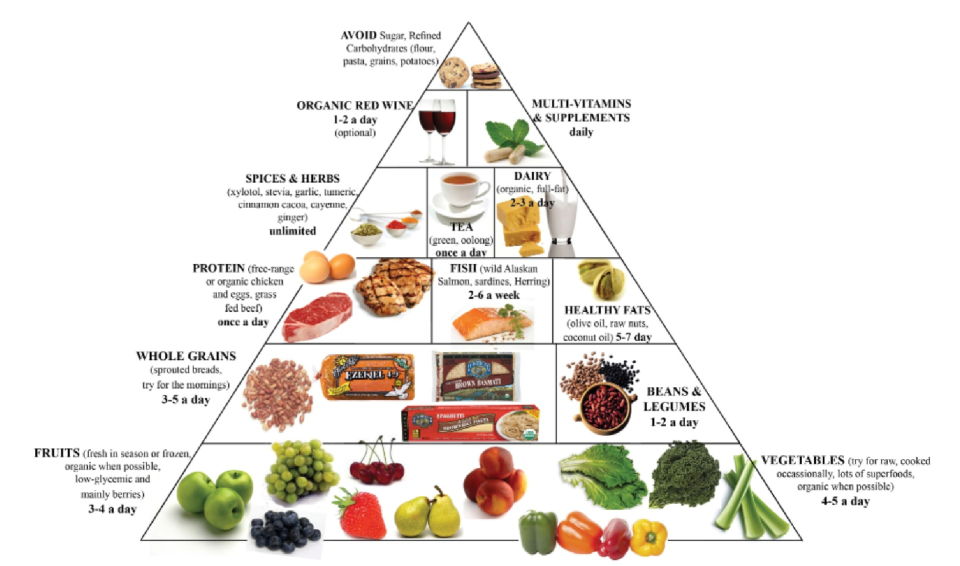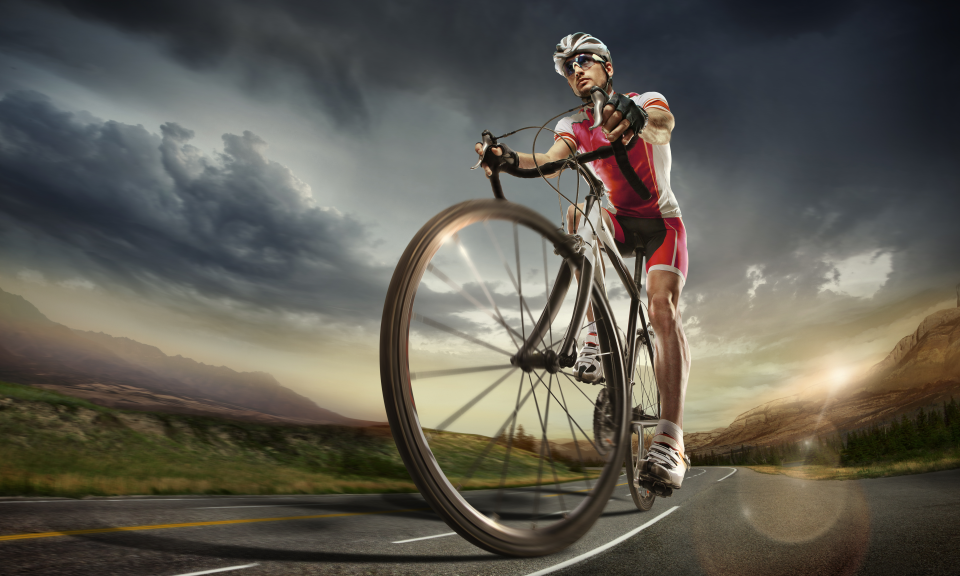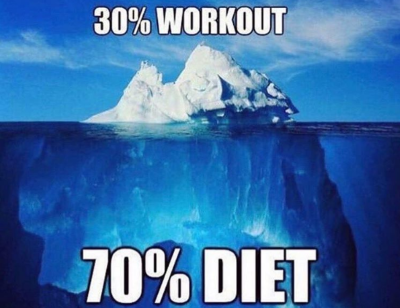Losing Weight in the Off Season, Part 2
Two weeks adapting to a “low-carb” diet
Winter is on its way and it’s an ideal time to prepare for next season with new training strategies and nutrition changes.
Now’s the time to start planning for the 2019 Season.
In part one we introduced the Fat Adaptive or Low Carb Diet, which might be for you.
It takes two weeks to adapt - here’s what happened in those two weeks.
Cutting out the Carbs
After seeking nutritional advice on entering a "Low Carb" Ketogenic diet aka “Keto”, we set a tough goal of no more than 50 grams of carbohydrate from good sources per day.
That’s equivalent to 2 bananas or 1 baked potato.
Good sources include whole grains, vegetables, legumes, low-fat milk, low-fat yogurt, cheese, nuts and seeds.
I cried, as I slowly said good bye to Pasta, Cakes, Bread, Rice, Sweets, Pastries, Cereal and less Sugar.
What I Ate
We transformed my diet by replacing carbs with protein and “good fats”.
We wanted to replace the carbs with good fats, but it took time to adapt to the diet, so initially we replaced it with protein until we found out what I liked to eat.
What I Drank
There’s no way I was giving up coffee or tea, so I cut my sugar in these to half a teaspoon.
I drank carbonated spring water when I was thirsty rather than fruit juice.
Good Things I Like to Eat
Meat like bacon and chicken, fish and sea food like cod and salmon, eggs, hummus, vegetables, milk, yoghurt and cheese. Olive Oil.
Breakfast
A typical breakfast consisted of 2 rashers of bacon and 1 egg cooked in Olive Oil served with Avocado and Chilli Sauce.
Olive oil and avocado both contain heart-healthy oleic acid, a monounsaturated omega-9 fatty acid – a good source of “good fat”.
An alternative was two boiled eggs with avocado. Eggs contain a lot of protein which fills you up and is a great way of avoiding hunger later in the day.
Snacks
It was essential to have healthy snacks to hand whilst adapting.
A typical snack contained natural greek yogurt mixed with some honey.
I also snacked on peanuts, nuts and seeds.
Another great snack was carrots with hummus.
Dinner
Fish, bacon or chicken with either vegetables or salad was the main options.
I added spices, herbs, garlic and soy sauce to liven up dishes and avoid having the same meal.

Training Rule #1
Sticking to the nutrition and dietary requirements of a low carb or “keto” diet is the main training goal, not riding your bike.
WTF - I hear you cry?
No matter what, think about every meal and avoid Carbs.
We cannot stress how important this is.
Training Rule #2
At the moment the weather is ok for me to get out on the bike for around 4 – 6 hours minimum a week.
Due to the fact that you are adapting to the diet. It’s essential not to ride more than around 2 hours to begin with. This is the natural point at which your body will run out of carbohydrate stored in your muscles and liver and switches to fat. You don’t want to run out of carbs and "bonk" while adapting.
I made this mistake, increasing a ride over 2.5 hours and paid the price, groveling home, starving, with flashing lights in my eyes (like a migraine headache) as my brain was depleted of carbs. Not much fun.
For trained endurance athletes, stick to 2 hours; Intermediate 1.5 hours and novice riders about an hour. Ride steadily in training Zones 1-3, no intervals. Ride a route you know, that takes the same amount of time every time. Start forming a new training habit.
If the weather is bad then turn to rollers or an indoor trainer, at home or at the gym. You really need to put in 4 hours a week at least. At least one two hour session. Again steadily in training Zones 1-3, no intervals.
Don’t go and do a spin class as they can be very intense, unless you can sit and ride steady.
Swimming is another good alternative. Two sessions of 30 mins of non-stop lengths would replace 2 hours on the bike.
You can also switch from Road Cycling to Gravel, CX, Fat Bike or MTB. These are great alternatives as long as you stick to the 2 hours / Zones 1-3 rule while you adapt for the first two weeks.
Remember, stick to the diet and enjoy riding. These first two weeks are critical. Going too hard on the bike could mean you slip back into Carbs as your body won't be able to cope and your brain will take over your appetite!
Training Rule #3
Don't break Training Rule #1. Remember your training, 70% diet, 30% bike.
Side Effects. aka "Low Carb Flu"
You will experience some effects while your body adapts.
I personally found myself quite hungry at times. That’s where the snack meals kicked in. I put this down to the “low carb” feeling that was described, as your body adjusts to not getting it’s typically carb intake.
This was also elevated by longer rides. I’d eat after a 2 hour ride, but I found myself hungry an hour later. I ate the right foods to satisfy my hunger.
Later in the second week the “low carb” feeling faded and I felt differently. My cravings for carbs had vanished and I started to feel like a "fat burning machine".
Basically my body was adapting to the fact it now had to get energy from my fat stores, and it was starting to work.
Lessons Learned
I started eating yogurt which was higher in sugar and still had Carbs. I switched to natural greek yoghurt.
I was reminded to drink more, this helped my body adapt to the changes.
We realized that I needed to plan my weekly meals and shop on that basis. I prepared and cooked my own meals separately from the family. I actually enjoyed it.
Eating healthy can cost more money. However after the first week and knowing what was healthy and enjoyable to eat, we bought some things in bulk like peanuts and frozen chicken. Savvy shoppers will realise that you can eat healthy on a budget. I cut out buying too much meat and fresh fish and went for things like bacon, chicken, ham and tinned fish like sardines and tuna.
I used a lot of garlic, spices, soy sauce, olive oil, hummus, cheeses, chilli, peppers and sauces to spice up meals.
I probably ate too much protein to start with, until I learnt to eat more “good fats”.
I made sure I didn’t ride for too long and too intense. I cut my rides down around 2 hours. I rode below my threshold in training Zones 1 – 3.
Straight after rides, I used a blender and mixed whey protein powder (the only special thing we bought), with one banana, soya milk and cocoa powder to make a cool protein shake. I also would try to a have a meal of two boiled eggs and avocado to satisfy my hunger too.
Did I Cheat?
Yes. Someone bought a loaf of fruit bread one morning. I couldn’t help it - I ate 2 slices.
Someone bought peanut butter cookies. I ate a few.
I “forgot” to not put half a teaspoon of sugar in coffee.
Apart from that I put my all my efforts into NOT EATING CARBS.
Who’s done this Diet?
The following gives a possible insight into Chris Froome's journey into becoming "one of the world’s top cyclists". We have to stress none of the information below is based on proven facts. It's based on articles and information published around Froome and tweets from his wife, some details cannot be substantiated.
In 2007, at the age of 22, Froome turned professional with Team Konica Minolta. He moved to Europe to further his career, joining team Barloworld.
In 2010 he moved to Team Sky. It's rumoured that Chris Froome quit carbs for protein and lost 20 pounds, before he broke through into the top professional rankings by winning more races. Froome was largely unknown until he started winning. The 20-pound weight loss has allowed him to thrive, especially in the mountains.
This success could be down to Team Sky who probably influenced him in his diet. Bradley Wiggins is also known to have dropped his weight with Team Sky too.
After just losing the weight, Froome's VO2max power increased by around 10%. His power to weight ratio went up into the 6-7 watts per kilo bracket, that’s world class.
Imagine what it will do for you?
2019 Bucket List
So if you are looking to prepare for the 2018 season and have some big challenges on your 2018 Bucket List, like:
 Riding your first “Century” of 100 miles
Riding your first “Century” of 100 miles
 A Tougher Gran Fondo like the GFNS Gran Fondo Golden
A Tougher Gran Fondo like the GFNS Gran Fondo Golden
 The Alps, Pyrenees or Dolomites like the Gran Fondo Marmotte Alps
The Alps, Pyrenees or Dolomites like the Gran Fondo Marmotte Alps
 The Etape Du Tour - a stage of the Tour de France for amateurs
The Etape Du Tour - a stage of the Tour de France for amateurs
 Trying your first authentic Italian Gran Fondo
Trying your first authentic Italian Gran Fondo
 Do your first Piccolo (30 mile) or Medio Fondo (60 mile) Gran Fondo event.
Do your first Piccolo (30 mile) or Medio Fondo (60 mile) Gran Fondo event.
 Ride a multi-day stage race or endurance challenge
Ride a multi-day stage race or endurance challenge
 Become a Hill Climbing Genius
Become a Hill Climbing Genius
Suitability
This diet is suitable for you in the following circumstances:
 It's going to snow for the next 5 months
It's going to snow for the next 5 months
 You have "wound down" your Gran Fondo/Sportive season
You have "wound down" your Gran Fondo/Sportive season
 You want to get through winter and be in the best shape come spring
You want to get through winter and be in the best shape come spring
 You live in the Northern Hemisphere and it’s going to get dark, cold, wet and miserable
You live in the Northern Hemisphere and it’s going to get dark, cold, wet and miserable
 You have limited time to train each week, minimum 4 hours.
You have limited time to train each week, minimum 4 hours.
This diet probably isn’t suitable if:
 You’re racing
You’re racing
 You’re still doing or planning longer endurance rides (like a Winter Training Camp or a Gran Fondo in sunnier climbs)
You’re still doing or planning longer endurance rides (like a Winter Training Camp or a Gran Fondo in sunnier climbs)
 You have a very active job outside like engineering, building or construction where you’re burning lots of calories
You have a very active job outside like engineering, building or construction where you’re burning lots of calories
 You have a job which involves a lot of travelling
You have a job which involves a lot of travelling
 You are pregnant, have high blood pressure or diabetes. If in doubt seek medical advice.
You are pregnant, have high blood pressure or diabetes. If in doubt seek medical advice.
What Next?
I’ve turned into a “fat burning machine”. The key is to stick to the nutritional and training regime for 1 month and report back.
I intend to slowly increase the time on the bike and see what happens. Theory says after 2.5 hours, I shouldn't "bonk" now that I'm "fat adapted".
After a month I should visibily notice a reduction in body fat. I’ve already noticed my stomach fat has reduced slightly now I'm "off Carbs".
If you are serious about taking up this regime, then I would recommend taking a selfie and saving it.
Go onto Instagram and look up #keto and you’ll see amazing stories of everyday people's "before and after shots" who have transformed their lives on a “low carb” diet.
I'm aiming to stay on this diet until the end of February at least.
If I can burn off all my body fat I should weigh a bit less and be in the best shape to start "targeting my training" for my “Bucket List" rides in 2018.
Theory says that I could lose anywhere from 10-15 pounds as I strip away layers of fat from my body.
This diet might work for you in the off season. It takes will power to get started and "break through" the first two weeks.
The less body fat you carry means you're power to weight ratio will increase, letting you climb faster, longer, as well looking and feeling better about yourself.
You never know – you might just get that KOM or QOM record or age category prize at a Gran Fondo.
I have a gilet from my road racing days. If I could get back into this that would be amazing.
2019 Bucket List
Get the most up to date information on confirmed 2018 events here on Gran Fondo Guide. We’re busy confirming the details of thousands of events worldwide with organizers.
2018 has been another record for cycling globally which we can confirm that this pace is increasing, with more people taking up cycling and more events - worldwide.
The "Gran Fondo Phenomenon" continues to expand globally.
Start preparing for 2019, here's some direct calendar links:
2019 U.S. Gran Fondo Calendar
2019 Canadian Gran Fondo Calendar
2019 North America Gravel Grinders
2019 North America Century Rides
2019 UK Sportive Calendar
2019 UK Gran Fondo Calendar
2019 European Gran Fondo Calendar
This training article was written by Mark Harding from Gran Fondo Guide.
Mark is a Qualified Personal Trainer and life long cyclist.
Mark sought the advice of a qualified nutritionist in regards to his dietary changes.
Losing Weight in the Off Season Series
Part 1 - Lose Weight in the Off Season
Part 2 - Two weeks adapting to a “low-carb” diet
Part 3 - Xmas and trying the "Super Juice Me" diet
Part 4 - Guide to Weight Loss during Base Training













